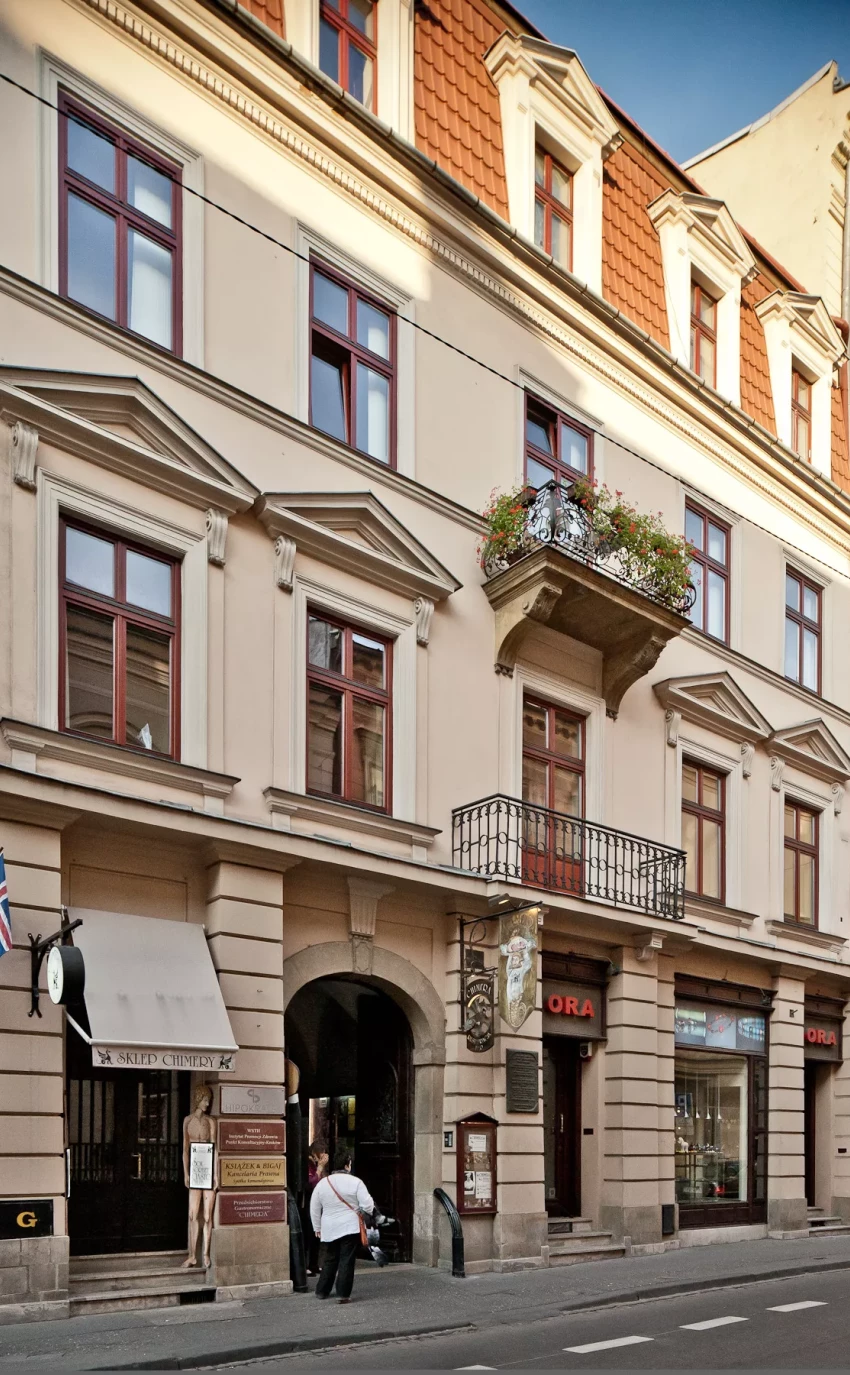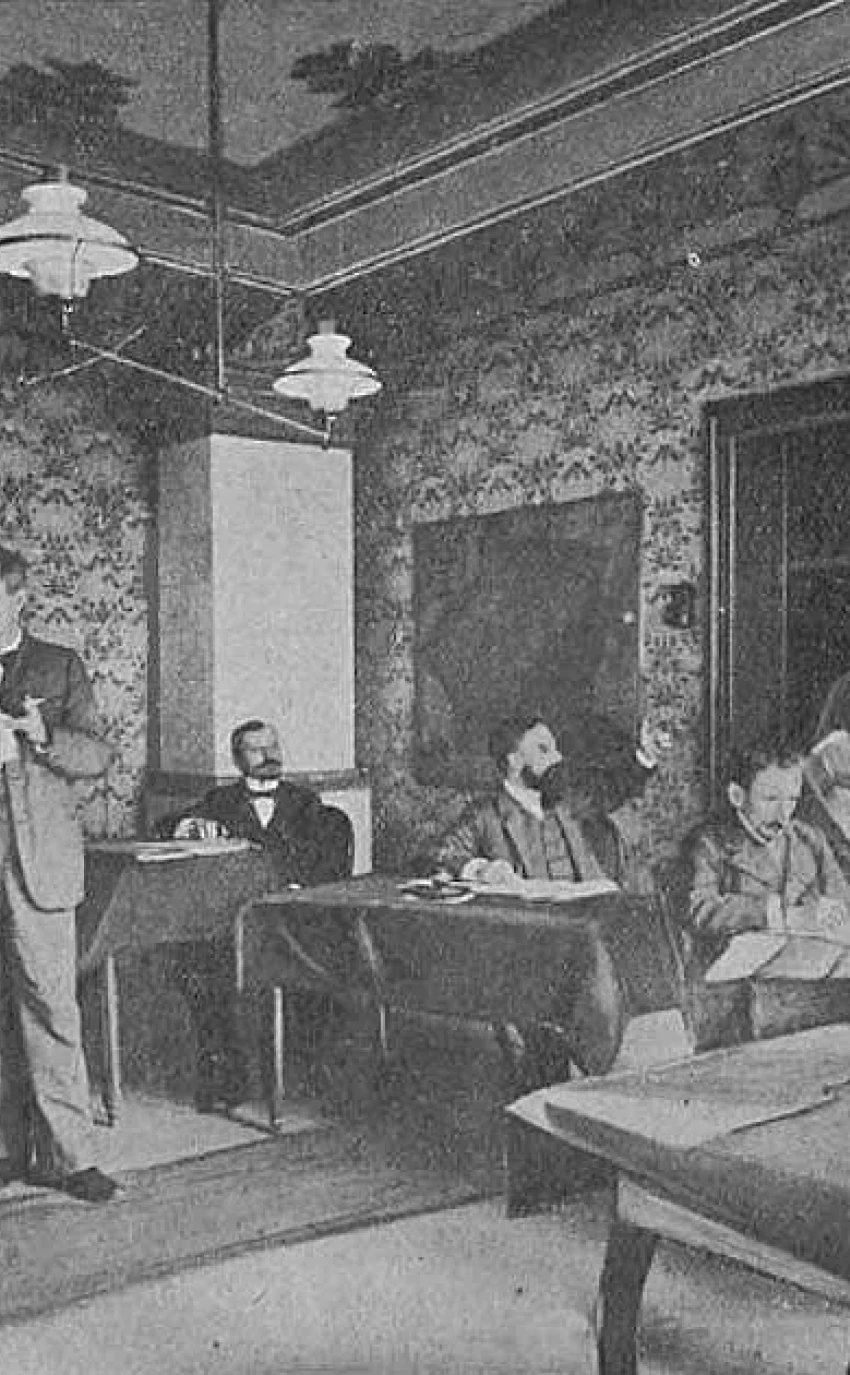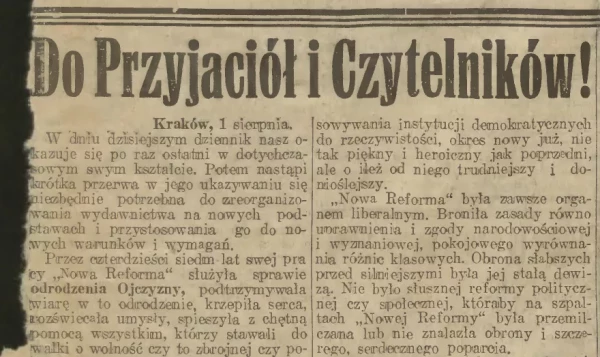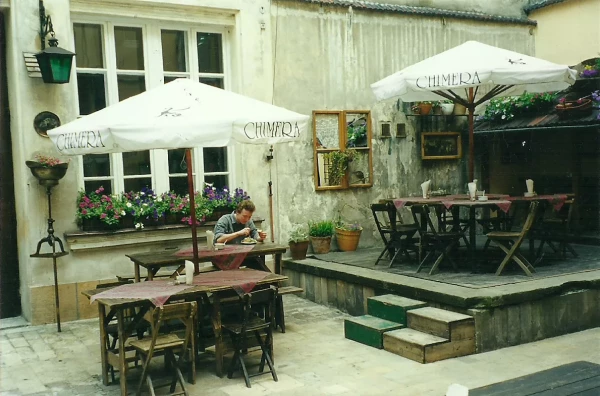Nowa Reforma is open from Thursday to Sunday from:
Monday . . . . . . . . Closed
Tuesday . . . . . . . . 12:00 - 22:00
Wednesday . . . . . 12:00 - 22:00
Thursday . . . .12:00 - 22:00
Friday . . . . . . 12:00 - 22:00
Saturday . . . . 12:00 - 22:00
Sunday . . . . . 12:00 - 18:00
Nowa Reforma - a restaurant in the heart of historic Krakow.
Nowa Reforma is a restaurant located in the basement of a 14th-century tenement house at św. Anny 3, in the heart of the historic center of Krakow. The name of the premises refers to the former daily newspaper published under the same name, which was published in the years 1893-1928 in the basement of this tenement house.


GENIUS LOCI or THE HISTORY OF THIS PLACE
The house at 3, St. Anne’s Street was built in the 14th century.
The medieval cellars (which have always been used for commercial purposes) were initially accessed directly from the street, whose level has risen by about two meters over the last 600 years, which explains why you have had to go down all of 25 steps in order to get here. The history of the building comprises two clearly discernable traditions:
I. Wine, Beer and Spirits
At the turn of the 15th and 16th centuries, the building belonged to Jan Haller, who was a highly successful merchant dealing in copper and Hungarian wine. During his frequent business trips abroad, he established contacts with printing houses in Western Europe.
In 1501 he came back to Cracow accompanied by a printer from Metz — Caspar Hochfeder — who began printing books for the Haller publishing house.
On September 30th 1505, the Haller publishing house was granted a royal privilege which gave it the exclusive right to print official papers. It thus became the first permanently established printing house in sixteenth-century Poland.
At the beginning of the 20th century, the building was occupied by the successful lawyer Adam Doboszyński, who was not only a town councillor, but also a delegate to the Viennese Parliament. Doboszyński bought and subsequently published the “Nowa Reforma” (“New Reform”) daily newspaper.

THE Nowa
Reforma
On November 29th 1882, the “Reforma” (“Reform”) daily newspaper — which had been published for nearly a year — was superseded by the “Nowa Reforma” (“New Reform”) daily, which became one of the most important newspapers not only in Cracow, but also in the whole of that part of Poland which was then under Austrian rule.
“During the forty-seven years of its existence, the “Nowa Reforma” daily served the cause of the rebirth of the Polish State, keeping alive and fortifying our faith in that rebirth, enlightening minds and readily coming to the aid of all those who were prepared to fight for our freedom. In accordance with the faith and conviction of all enlightened Poles in the nineteenth century, “Nowa Reforma” saw the triumph of democracy as the surest path to national emancipation and to the rebirth of the Polish State — hence its devotion to the cause of Polish democracy, which it served faithfully, with the best intentions and to the best of its ability.

„»Nowa Reforma« has always been a liberal newspaper, defending the principles of national and religious harmony, equal rights and the peaceful levelling out of class differences. Its constant motto has always been the defence of the weak against the strong” *
Novelists who published their work in the “Nowa Reforma” newspaper include Orzeszkowa, Żeromski and Miłkowski. In the 19th century, the daily competed with the conservative “Czas” (“Time”) newspaper, while in the 20th century it also competed with the socialist “Naprzód” (“Forward”) newspaper.
* “Nowa Reforma” № 175 of the final year XLVII (the very last issue), Cracow, Friday, 3rd August 1928.
At the height of its popularity, it had three daily editions and a circulation of over 10 000.
In 1905, Adam Doboszyński — who had turned “Nowa Reforma” into a well-edited and influential newspaper — set up a printing shop in a side annexe on the ground floor. This building also housed the newspaper’s editorial office.
Apart from archival issues of the newspaper which are on display in the various rooms of our restaurant, mementos of its past include elements of the building’s structure, a window-pane made of polished Viennese cut glass [I] which could once be seen at the entrance to the editorial office and which protects a copy of the first issue of “Reforma” of January 1st 1882 (printed in gold ink) [II] , which you can see on the left.
II. Wine, Beer and Spirits
In the cellars, we can still see the remnants of what once used to be wine-maturing alcoves, which have now been adapted as cosy boxes and which would seem to testify to the fact that during the golden age of Renaissance Cracow, Jan Haller ran a printing shop at the back of the building and a luxury wine tavern near the entrance.
The oldest parts of the building — and in particular the original Gothic portals and Gothic fireplace, together with newly discovered [III] fragments of pottery and large drinking glasses — indicate that the cellars were not only used for the storing, maturing and distribution of wine, but that they also housed a kitchen.
After the military disasters of the 17th and 18th centuries, Cracow became a poorer town and the cellars eventually became the main storehouse — run by Ludwik Lazar — of the Żywiec Archducal Brewery. They were used for the bottling and storage of beer, which was also sold by the glass together with breakfast meals. Original bottles from the Archducal brewery [IV] are on display in the adjoining showcase.

The building was subsequently acquired by the Herteux family, who turned it into the Victoria Hotel. The kitchen and restaurant were now on the ground floor, while the cellars were used for storing coal.
After World War II, the building housed the famous “White Mouse” pâté restaurant, which was run by Jadwiga Malkiewiczowa (née Doboszyńska) until her arrest in 1947. It used to be the favourite haunt of journalists of the “Przekrój” magazine and also of a group of leading film-makers.
In the 1970s, the building was completely renovated and the annexe was demolished along with the printing shop, while some of the cellars were adapted as a café. The rooms on the ground floor were used as exhibition rooms by the Polish Union of Art Photographers. Queues of people wanting to see some of the most famous exhibitions (such as “Polish Months” and “Witkacy’s Photography”) often stretched as far as the Main Square.
1991.
In 1991, the building housed the “Chimera” cafeteria run by Arthur Wroński (who had been engaged in “underground” publishing during the last decade of the communist period) and his wife Kaja (who is a painter). The former coal cellars were renovated and decorated with original pictures and drawings. “Chimera” was the first cafeteria in Cracow to offer a whole variety of salads, light meals, fresh juices, together with an artistic ambience. During the winter months, food was served in the cellars, while during the warm months of the year guests could be served in the open-air courtyard cafeteria. At present, the latter is open all year round, which means that guests can eat either at the “Chimera” cafeteria or at todays’s “Nowa Reforma” (New Reform) restaurant ...
... in accordance with the mission of our predecessor in this building — the “Nowa Reforma” newspaper — which was to “help all those of its readers who had learnt to be unhappy, as they coped with misfortune and suffering, to take on a new and most difficult task: that of mastering the skilful art of being happy ...”**

















